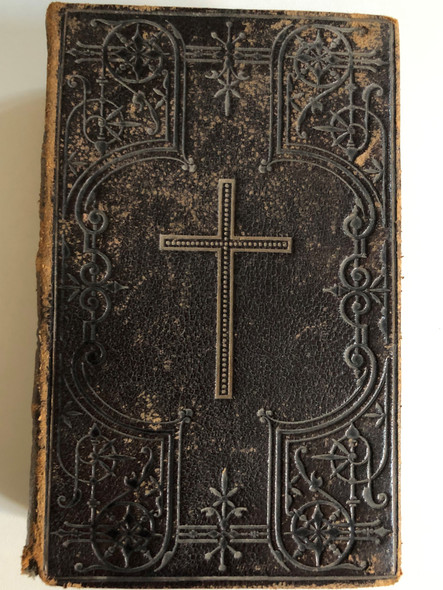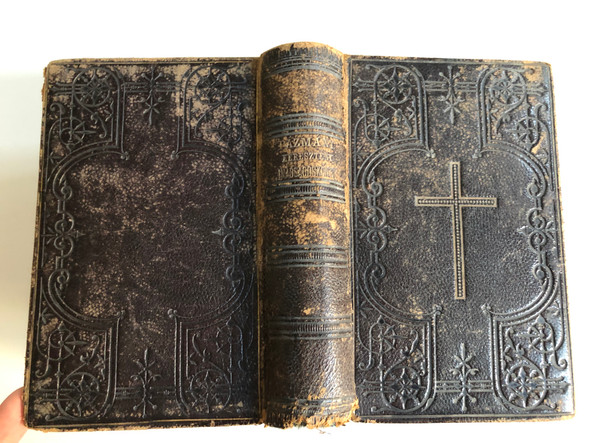Description
Hungarici Monasterii Ordinis Sancti Pauli Primi heremitae de urbe Roma by Lorenz Weinrich / Hungarian Catholic monks in Rome from the order of St. Pauline The First / Bibliotheca Academiae Hungariae in Roma - Fontes 2 / Latin book
Paperback 1999
PAGES: 416
ISBN: 9789638472434 / 978-9638472434
ISBN-10: 963847243X
PUBLISHER: Magyar Egyháztörténeti Enciklopédia Munkaközösség
LANGUAGE: Latin
Hungarici Monasterii ordinis Sancti Pauli Heremitae de urbe Roma instrumenta et priorum registra
Hungarian Summary:
Lorenz Weinrich a berlini; Freie Universitat professzora, főként forráskiadással foglalkozik.
A római Santo Stefano Rotondo Sszámadáskönyveinek (1404-1579) és Okleveleinek szövegkiadása rávilágít a magyar pálosok római helyzetére, Bazdasági, politikai jelenlétükre az egyházi adminisztrációban. A kolostorra vonatkozó pápai dokumentumok és a ház Sazdasági Ügyeivel foglalkozó forrásgyűjtemény latin apparátussal készült, tehát világszerte forgatható kiadvány. A 40 különböző levéltári fondból kikutatott iratok választ adnak Kapusi Bálint és rendtársainak szerepére a magyarok nemzeti templomának számító Santo Stefano Rotondo életében.
A pálos rend magyar alapítású férfi remete szerzetesrend amely a mai napig működik. Hivatalos neve: Szent Pál első remete szerzeteseinek rendje (latinul: Ordo Fratrum Sancti Pauli Primi Eremitae, OFSPPE; lengyelül: Zakon Świętego Pawła Pierwszego Pustelnika). A rendet Boldog Özséb esztergomi kanonok alapította, amikor 1250-ben egyesítette a Patacs-hegyi és a pilisi remetéket.
A rend központja jelenleg a lengyelországi Częstochowában, a Jasna Góra-i kolostorban van, a magyar tartomány székhelye pedig Pécsen. Magyar pálos közösségek vannak Budapesten (a Magyarok Nagyasszonya-sziklatemplomban), Márianosztrán és Petőfiszálláson.
English Description:
The Order of Saint Paul the First Hermit (Latin: Ordo Fratrum Sancti Pauli Primi Eremitae, Croatian: Red svetoga Pavla Prvoga Pustinjaka – pavlini, Czech: Řád paulínů, German: Pauliner, Hungarian: Szent Pál első remete szerzeteseinek rendje, Polish: Paulini – Zakon Świętego Pawła Pierwszego Pustelnika, Slovak: Rád Svätého Pavla Prvého Pustovníka), known also simply as Pauline Fathers, is a monastic order of the Roman Catholic Church, founded in Hungary during the 13th century. Its post-nominal letters are O.S.P.P.E.
This name is derived from the hermit Saint Paul of Thebes (died c. 345), canonized in 491 by Pope Gelasius I. After his death, the Monastery of Saint Paul the Anchorite was founded, taking him as its model was founded and still exists today.
Formed in 1250 by the Blessed Eusebius of Esztergom (Hungarian: Boldog Özséb) of two communities, one founded at Patach around 1225 by Bishop Bartholomew of Pécs, who had united the scattered hermits of his diocese, and the other consisting of his own followers. In 1246, Blessed Eusebius, Canon of the Cathedral of Esztergom, resigned his dignities, distributed his goods among the poor and withdrew to the solitude of the Pilis mountains, near Zante (probably related to present day Pilisszántó) to lead a life of penance with a few companions (see the ruins of the Holy Cross Monastery at present-day Kesztölc-Klastrompuszta). Four years later, he is said to have been admonished in a vision to gather into community the other hermits living in the vicinity, for whom he built a monastery and church the ruins of which are near the village of Pilisszentlélek (today a part of Esztergom).
In the same year, Eusebius proposed and obtained affiliation with the Patach community under the rule prescribed by its founder, and was chosen superior. He received the approbation of Ladislaus, Bishop of Pécs, for the new Order, but the publication of the decrees of the Fourth Lateran Council at this time necessitated a journey to Rome to secure final authorization by the Holy See.
In 1263, a new Rule was given the congregation by the Bishop of Pécs, which was superseded by still another drawn up by Andrew, Bishop of Eger, after the death of Eusebius (20 January 1270), and this was followed until 1308, when the permission of the Holy See was obtained to adopt the Rule of St. Augustine. The Order was accorded many privileges by succeeding pontiffs, among others that of exemption from episcopal jurisdiction, and provisions were made for the pursuit of higher studies in many of the monasteries, one papal regulation ordaining that no member could be raised to any dignity in the Order without the degree of Doctor of Divinity, for which a rigid examination was prescribed.


























































